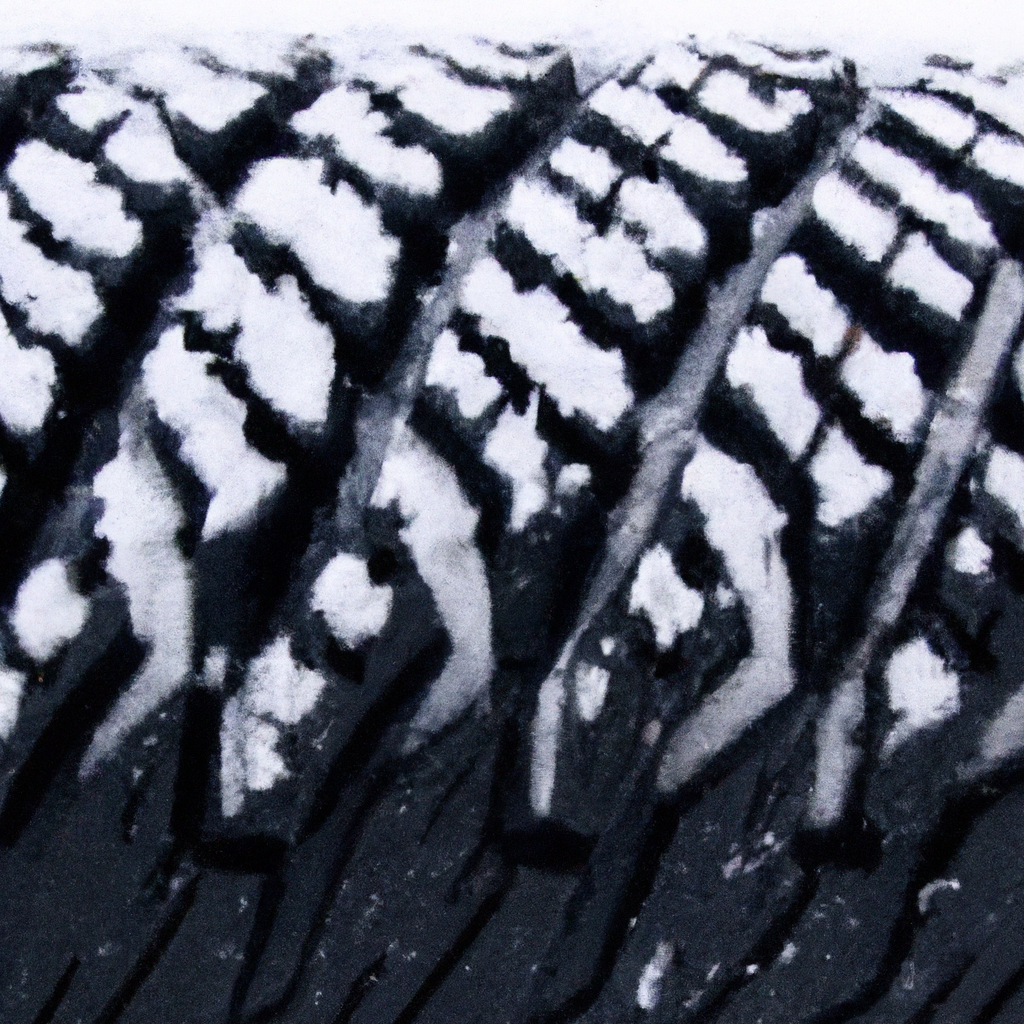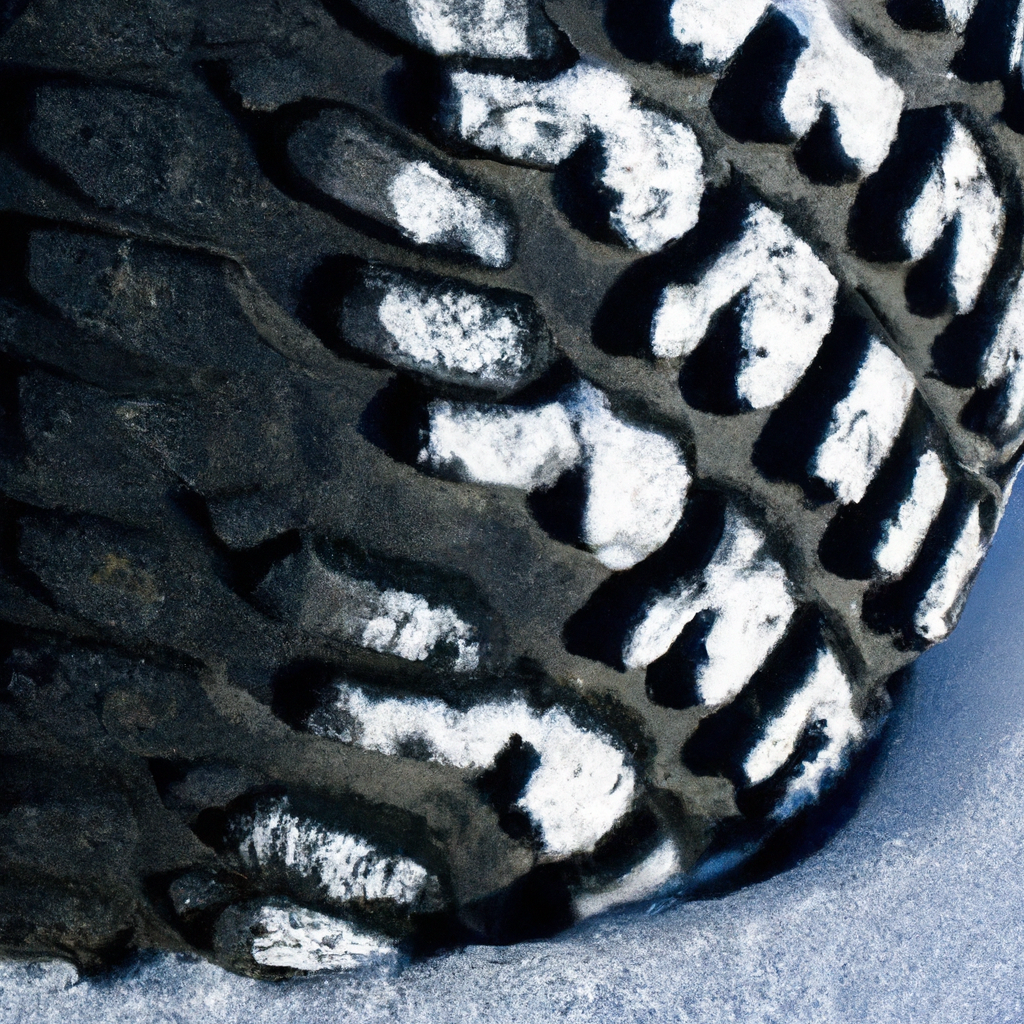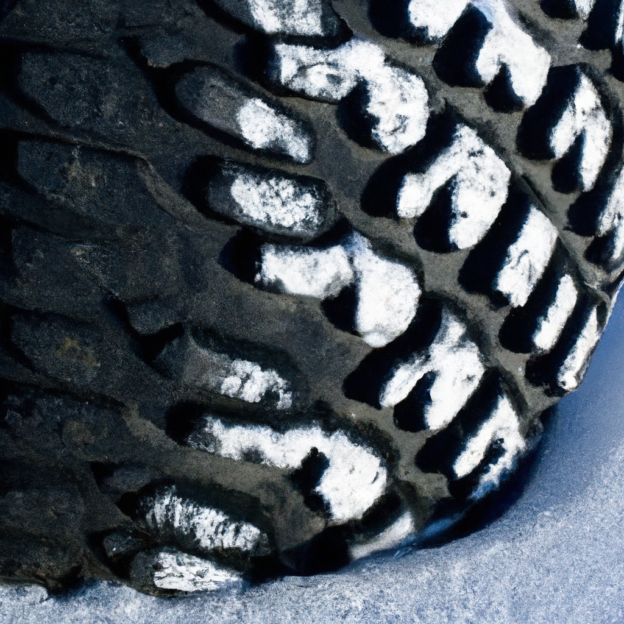Winter is here, and with it comes the daunting task of clearing snowy driveways and walkways. If you own a snowblower, you may be wondering about the ideal tire pressure for optimum performance. After all, the right tire pressure can make all the difference in how well your snowblower maneuvers through the snow. In this article, we’ll explore the recommended tire pressure for snowblower tires, giving you the knowledge you need to tackle those icy paths with ease. So, grab a cup of hot cocoa and let’s dive into the world of snowblower tire pressure!

Importance of Proper Tire Pressure
Optimal Performance
Having the proper tire pressure is crucial for the optimal performance of your snowblower. When the tires are inflated to the recommended pressure, they are able to provide better traction and control, allowing you to navigate through snow-covered surfaces with ease. Proper tire pressure ensures that your snowblower moves smoothly and efficiently, enhancing its overall performance.
Enhanced Traction and Control
One of the main reasons why proper tire pressure is important is because it significantly improves traction and control. When your snowblower tires are properly inflated, they have a larger contact patch with the ground, providing increased grip and stability. This is especially important when maneuvering on slippery or icy terrains. With the right tire pressure, you can confidently navigate through the snow, avoiding accidents and ensuring a safer snow removal experience.
Even Weight Distribution
Maintaining the recommended tire pressure helps to evenly distribute the weight of your snowblower. Uneven tire pressure can result in an unbalanced machine, which can cause unnecessary strain on certain parts of the snowblower, leading to premature wear and tear. By ensuring that the tire pressure is evenly distributed, you can prolong the lifespan of your snowblower and avoid costly repairs.
Improved Fuel Efficiency
Proper tire pressure also plays a role in improving fuel efficiency. When the tires are inflated to the recommended pressure, there is less rolling resistance, which means that the engine doesn’t have to work as hard to propel the snowblower. This results in less fuel consumption and ultimately saves you money in the long run. By maintaining the right tire pressure, you can optimize your snowblower’s fuel efficiency and maximize its performance.
Determining the Recommended Tire Pressure
Manufacturer’s Guidelines
The recommended tire pressure for snowblower tires can usually be found in the snowblower’s manufacturer’s guidelines. These guidelines provide specific information regarding the optimal tire pressure for different models and tire types. It is important to refer to these guidelines to ensure that you are inflating your snowblower tires to the correct pressure.
Consulting the Operator’s Manual
Another valuable resource for determining the recommended tire pressure is the operator’s manual that comes with your snowblower. The manual typically includes detailed instructions on how to operate and maintain your machine, including the proper tire pressure specifications. Make sure to read through the manual thoroughly to find the specific tire pressure recommendations for your snowblower model.
Checking Tire Sidewall
In some cases, the recommended tire pressure can be found on the sidewall of your snowblower tires. This information is usually imprinted on the tire itself and includes the appropriate tire pressure range. However, it is important to note that the tire sidewall may not always provide the exact recommended tire pressure for your snowblower, so it’s still best to refer to the manufacturer’s guidelines or the operator’s manual for accuracy.
Using a Tire Pressure Gauge
To accurately determine the recommended tire pressure for your snowblower tires, it is recommended to use a tire pressure gauge. This handy tool allows you to measure the air pressure inside the tires and ensure that they are inflated to the correct level. Simply attach the gauge to the valve stem of the tire and check the meter or digital display to obtain the accurate tire pressure reading. This method provides the most accurate results and helps you maintain the optimal tire pressure for your snowblower.
Factors Influencing Recommended Tire Pressure
Tire Size and Type
The size and type of tires on your snowblower can greatly influence the recommended tire pressure. Different tire sizes and types require different amounts of air pressure to achieve optimal performance. It is important to refer to the manufacturer’s guidelines or the operator’s manual to determine the appropriate tire pressure based on the specific size and type of tires on your snowblower.
Load or Weight Capacity
The load or weight capacity of your snowblower also plays a role in determining the recommended tire pressure. If you regularly operate your snowblower with heavy loads or attachments, you may need to adjust the tire pressure accordingly to accommodate the extra weight. It is important to consider the weight capacity of your snowblower and adjust the tire pressure as necessary to maintain optimal performance and stability.
Operating Conditions
The operating conditions in which you use your snowblower can also impact the recommended tire pressure. If you frequently use your snowblower in extreme weather conditions or on rough terrains, you may need to adjust the tire pressure to ensure optimal traction and control. It is important to consider the specific operating conditions and make appropriate adjustments to the tire pressure to maximize your snowblower’s performance.

Cold Weather Considerations
Effects of Temperature on Tire Pressure
Cold weather has a significant impact on tire pressure. As temperatures drop, the air inside the tires contracts, causing the tire pressure to decrease. This means that during the winter months, you may need to regularly check and adjust the tire pressure to compensate for the temperature changes. Failing to maintain the correct tire pressure in cold weather can result in reduced traction and control, compromising the performance of your snowblower.
Winter Air Compression
In addition to the effects of cold weather, winter air compression can also affect tire pressure. When you operate your snowblower in cold temperatures, the snow and ice can compact around the tires, leading to an increase in air pressure. This can potentially cause overinflation if not monitored and adjusted accordingly. It is important to be aware of the winter air compression and regularly check and adjust the tire pressure to maintain optimal performance.
Temperature Adjustments
To compensate for the effects of cold weather and winter air compression, it is recommended to adjust the tire pressure accordingly. You may need to slightly increase the tire pressure to counteract the decrease in pressure due to cold temperatures. It is important to refer to the manufacturer’s guidelines or the operator’s manual for specific recommendations on temperature adjustments. By making these necessary adjustments, you can ensure that your snowblower tires maintain the optimal tire pressure despite the cold weather conditions.
Recommended Tire Pressure for Snowblower Tires
Standard Tire Pressure Range
The recommended tire pressure for snowblower tires generally falls within a standard range. Depending on the specific model and tire size, the standard tire pressure range is typically between 10 to 20 psi (pound-force per square inch). It is important to refer to the manufacturer’s guidelines or the operator’s manual to determine the recommended tire pressure within this range for your particular snowblower model.
Specific Manufacturer Recommendations
For more precise tire pressure recommendations, it is best to consult the manufacturer’s guidelines or the operator’s manual for your snowblower. Different manufacturers may have specific recommendations based on the design and specifications of their machines. These recommendations take into consideration factors such as tire size, load capacity, and operating conditions to ensure optimal performance and safety.
Adjustments for Steep Slopes or Uneven Terrain
If you frequently operate your snowblower on steep slopes or uneven terrain, you may need to adjust the tire pressure accordingly. Lowering the tire pressure slightly can provide increased traction and stability, allowing your snowblower to effectively navigate through challenging terrains. However, it is important to find the right balance and not lower the tire pressure too much, as it can lead to decreased control and potential tire damage.
Considering Extra Weight or Attachments
If you attach additional weight or accessories to your snowblower, such as a snow cab or a weight kit, it is important to adjust the tire pressure to accommodate the extra load. These additions can impact the weight distribution and balance of your snowblower, requiring you to increase the tire pressure slightly to maintain proper performance and stability. Consult the manufacturer’s guidelines or the operator’s manual for specific recommendations on adjusting the tire pressure with extra weight or attachments.
Inflation Techniques
Using Manual Tire Pump
Inflating your snowblower tires can be done using a manual tire pump. This method allows you to control the amount of air pumped into the tires and ensure that you reach the recommended tire pressure. Simply attach the pump to the valve stem of the tire and manually pump air until you reach the desired pressure. This method may take longer compared to using an air compressor but provides a more precise and controlled inflation process.
Utilizing Air Compressor
Using an air compressor is another effective method for inflating your snowblower tires. Air compressors provide a quicker and more efficient way to inflate the tires to the recommended pressure. Ensure that the air compressor is set to the appropriate pressure level and securely attach the compressor nozzle to the valve stem of the tire. Activate the compressor and monitor the pressure until it reaches the recommended level. Be cautious not to overinflate the tires, as it can lead to decreased traction and potential tire damage.
Avoiding Overinflation
Regardless of which inflation technique you use, it is crucial to avoid overinflating the snowblower tires. Overinflation can lead to decreased traction, reduced control, and increased risk of tire damage. Always refer to the recommended tire pressure provided by the manufacturer’s guidelines or the operator’s manual and ensure that you do not exceed this range. Regularly check the tire pressure using a tire pressure gauge to ensure that the tires are inflated to the correct level.
Signs of Improper Tire Pressure
Uneven Wear Patterns
Improper tire pressure can result in uneven wear patterns on your snowblower tires. If the tire pressure is too low, you may notice excessive wear on the sides of the tread. Conversely, if the tire pressure is too high, the center of the tread may show more wear. It is important to regularly inspect your snowblower tires for any signs of uneven wear, as this can indicate improper tire pressure and the need for adjustment.
Decreased Traction
One of the most noticeable signs of improper tire pressure is decreased traction. If your snowblower is struggling to grip the snow or slides easily on icy surfaces, it may be a result of incorrect tire pressure. Insufficient tire pressure leads to reduced traction, while overinflation can cause the tires to lose their grip on the ground. Monitoring and maintaining the proper tire pressure is essential for ensuring optimal traction and control.
Vibration or Shaking
Inconsistent or improper tire pressure can result in vibration or shaking of your snowblower. If you experience excessive vibration while operating your snowblower, it may be a sign of tires that are not properly inflated. Uneven tire pressure can cause the snowblower to shake and vibrate, affecting its stability and performance. Regularly check the tire pressure and adjust as necessary to eliminate any vibrations or shaking while using your snowblower.
Rapid Tire Wear
Another sign of improper tire pressure is rapid wear of the tires. If you notice that your snowblower tires are wearing out more quickly than expected, it may be an indication of incorrect tire pressure. Insufficient tire pressure can cause excessive wear on the sides of the tread, while overinflation can result in increased wear on the center of the tread. By maintaining the recommended tire pressure, you can ensure longer-lasting and more durable tires for your snowblower.
Tire Maintenance Tips
Regularly Checking Tire Pressure
To ensure optimal performance and safety, it is essential to regularly check the tire pressure of your snowblower. Make it a habit to inspect the tire pressure before each use, especially during the winter season when temperature fluctuations can affect the tire pressure. Invest in a reliable tire pressure gauge and take the time to measure and adjust the tire pressure if necessary. Keeping the tires properly inflated will greatly enhance your snowblower’s performance and longevity.
Inspecting for Damage or Leaks
In addition to monitoring tire pressure, it is important to regularly inspect your snowblower tires for any signs of damage or leaks. Check for cuts, punctures, or signs of wear that could compromise the integrity of the tires. If you notice any damage or suspect a leak, it is crucial to address the issue promptly before operating your snowblower. Damaged or leaking tires can negatively impact performance and safety, so it’s important to replace or repair them as needed.
Cleaning and Removing Debris
Snowblower tires can accumulate dirt, debris, and snow during use, which can affect traction and performance. It is important to regularly clean the tires to remove any buildup that could impair their function. Use a soft brush or cloth to gently clean the tire treads and sidewalls, removing any debris or caked-on snow. This will help maintain optimal traction and prevent debris from causing unnecessary wear on the tires.
Rotating Tires
Rotating the tires of your snowblower is an effective maintenance practice that helps promote even wear and prolongs their lifespan. Regularly swapping the front and rear tires prevents any individual tire from experiencing excessive wear in one specific area. Consult the manufacturer’s guidelines or the operator’s manual for recommended tire rotation intervals and techniques specific to your snowblower model. By regularly rotating your snowblower tires, you can ensure balanced wear and optimal performance.
Safety Precautions
Wearing Protective Gear
Before operating your snowblower, it is important to prioritize your safety by wearing appropriate protective gear. This includes goggles or safety glasses to protect your eyes from debris, gloves to keep your hands warm and provide a firm grip on the snowblower controls, and sturdy, non-slip footwear to ensure stability. Wearing the proper protective gear reduces the risk of injury and enhances your overall safety while using the snowblower.
Avoiding Inflating Tires When Hot
When adjusting the tire pressure of your snowblower, it is crucial to avoid inflating the tires when they are hot. Inflating hot tires can lead to inaccurate readings and improper tire pressure, as the heat from recent usage can cause the air pressure inside the tires to increase temporarily. Always allow the tires to cool down before checking or adjusting the tire pressure to ensure accurate and reliable results.
Proper Storage of Snowblower
When not in use, it is important to properly store your snowblower to maintain its performance and longevity. This includes deflating the tires to the recommended tire pressure for storage, as leaving them fully inflated for extended periods can lead to unnecessary strain on the tires. Consult the manufacturer’s guidelines or the operator’s manual for specific recommendations on tire pressure for storage. By following proper storage practices, you can ensure that your snowblower is ready for use when the next snowfall arrives.
Conclusion
Maintaining proper tire pressure is crucial for the optimal performance, traction, and control of your snowblower. By referring to the manufacturer’s guidelines or the operator’s manual, determining the recommended tire pressure, and considering factors such as tire size, load capacity, and operating conditions, you can ensure that your snowblower tires are inflated to the correct pressure. Regularly checking tire pressure, inspecting for damage or leaks, and practicing proper tire maintenance will enhance the lifespan of your snowblower tires and maximize their performance. By following these guidelines and taking the necessary safety precautions, you can confidently tackle snowy conditions with your snowblower and enjoy efficient and effective snow removal throughout the winter season.
